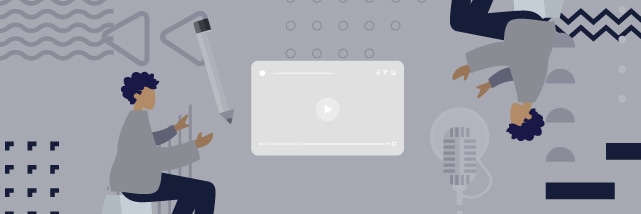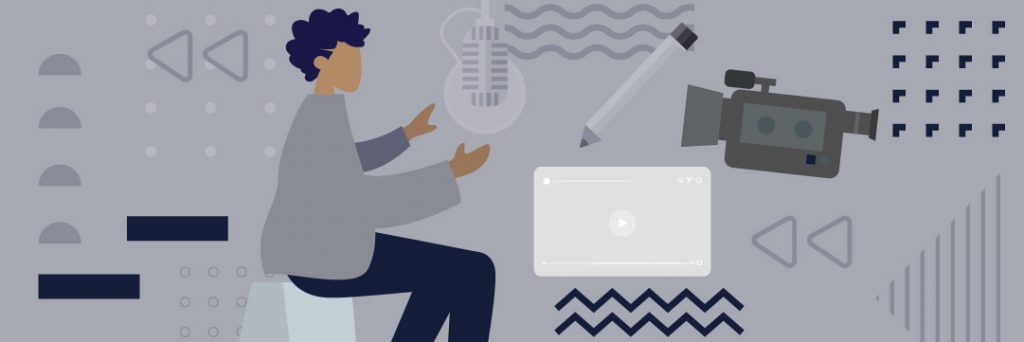Whether used as a major education platform or as complementary material, videos can dramatically enhance learning and teaching quality in various environments. If you’re still on the rocks about becoming an educational video creator, we’ve gathered some reasons for you to pursue this career path.
In recent years, a revolution has been taking place in the education sector. Now, the limit of learners you can reach has become endless thanks to technology developments and educational videos. The number of instructors, companies, and experts veering away from traditional textbooks have proven that being an educational video creator is a great career path.
Why Should You Be an Educational Video Creator?
Here are some reasons why releasing educational videos will benefit you compared to other teaching methods.
Improved flexibility
Teaching and learning can happen more productively for educators and teachers through videos. Learners can work at their own pace when you give them a set framework. Also, your video will allow your teaching topics to be broken down into different series, with more opportunities for reflection in between.
When you become an educational video creator, you won’t only enjoy flexibility when it comes to time, but also location. You can teach people from your office, home, or while commuting. You can do it even while lounging on your favorite beach.
More convenient information sharing
Educational videos allow learners and instructors to access and share content more readily and easily. This will also enable people to join online communities based on what their areas of interests are, instead of their geographical location.
When you use educational video content in an organizational setting, employees can access relevant information whenever they need it, instead of wasting time searching for it in your company handbook.
Freedom to teach whatever you want
If you want to become an educational video creator, you won’t have to deal with all the limitations of educators in the physical classroom. One of the greatest benefits is to teach whatever area you are interested in.
Most schools, organizations, and universities will not offer a class just because two people are interested in a specific topic. When interest wanes, they will eliminate the class. But when you have an educational video that is ready to upload online, this won’t be a problem.
Not only that, but most schools also follow a specific course syllabus. You may not agree with the set curriculum. After all, it may leave out valuable stuff you want to learn. When you become an educational video creator, you can tear down this barrier.
It will be the way of the future
Video learning offers tons of opportunities for educators and learners. It is estimated that more courses are set to be delivered online through videos in the future, and this will enable schools and students to save money.
Easier feedback
Analytics features can easily be inserted into videos. This will enable an educational video creator like you to track your student’s attendance and engagement when they are viewing your video. Other platforms also provide information on how long your video was watched, as well as its engagement level. This will allow you to gauge how effective your content is.
Opportunities for remote work are expanding
There is a booming market today for online courses. More institutions are capitalizing on this industry, and this does not only prove its potential to reach more students but also its ability to increase you and your institution’s earning potential.
Having educational videos means that schools and organizations do not have to hire full-time staff to teach courses or new knowledge. For example, if you are doing a seminar on new employees, you can simply show a video about the do’s and don’ts in the workplace instead of explaining it one by one.

Top Reasons Why Educational Video Works
Here are some reasons why educational videos work.
Visual stimulation is good for learners
A few decades ago, it was hard to imagine all people depending on technology for everything, even learning. The lives of people are changing at a rapid pace, and people will experience the equivalent of 20,000 years of progress in the next 100 years.
Now, students are expecting to be visually stimulated, and few people respond to text-only content effectively. Visual stimulation is an amazing tool that can encourage learners to interact with a concept. It also leaves an improved memory imprint in their mind, therefore making information retention better.
Educators need to keep in mind that sometimes, the information they discuss may be beyond the experience and reality of the students. For instance, when a teacher asks students to write about surfing, they assume that all learners have tried it. Students who have no idea what the sport is wouldn’t be able to start doing their assignments. However, showing them a video of the basics of surfing and the anatomy of a surfboard will give them the insight they need to write about it.
More diverse experience
Once you become an educational video creator, you can enhance your student’s learning experience by giving them more opportunities for cross-cultural and even multidisciplinary collaborations. This amazing learning experience can happen at a local, national, or international level. Educational videos targeted at young people will also give them a great blended approach to learning.
Better theory application
Now more than ever, learners are accessing information online or through their gadgets. When you are an educational video creator, you can tap into this potential. You can also harness the power of videos to make students understand how theories can be applied in real-life situations.
Videos are amazing for teaching practical concepts that need to be explained step by step. For example, if you are teaching new company employees how to input inventory, you need to tag them along every step of the way, from what types of products you have, to its variations, and a lot more. When they struggle, you can simply pause the video so they can catch up.
Great for digital literacy
This is very important, especially when it comes to school settings. Students need to realize that digital literacy and school are not the same things. They should be treated as different elements. Since digital literacy is an important skill that is a prerequisite to most career paths, learners need to be exposed to videos early on so they can become more proficient and confident in the future.
Not only will videos improve students’ digital literacy, but also their problem solving and thinking skills, as well as mastery learning.
Types of Videos an Educational Video Creator Can Make
We’ve rounded up some of the most effective video types you can follow depending on your goal. Keep in mind that these video types can be mixed.
Microvideo
Microvideos refer to short instructional videos that are centered on only one topic. These videos are only less than a minute long and perform best on social media platforms where people have a short attention span. This type of video is an amazing option if you need to teach a simple topic. For example, you may make a microvideo about how to send a corporate e-mail. For complex topics, consider creating a series of microvideos.
Tutorial
Also called how-to videos, tutorial videos are the best instructional teaching method if you want to walk people through the steps needed to complete a task. Usually, this type of video is around two to ten minutes long and can cover direct instructions, follow-along type instructions, and some interactive elements. To make sure it’s engaging, hire an animator.
Tutorial videos can be used to teach learners about any topic under the sun. There are no hard rules on how to use it, but there are some elements that can affect its effectiveness.
First, consider the topic. Does it need to be a written tutorial? Does it need to have a voice-over? Or can the process be communicated visually through the help of an editor? Second, do you have the budget to maintain these tutorials? This is important to consider if you introduce software that will be updated in the future.
Training
Training videos are the best choice if you want to improve the workplace skills of your employees. These videos can cover a wide range of topics like interpersonal skills, harassment, compliance, software training, and a lot more. Just like tutorials, this type of video leverages instructional techniques like direct instructions or follow-along type instructions. It usually uses engaging animation or real-life footage to help inspire a connection between the educational video creator and the trainee.
Screencast
This type of video is composed of screen recordings. Screencasts can be great if you want to teach someone how to perform a task. Screencasts are short, informal, and usually intended for a niche audience. This format is similar to real-time teaching, where instructors create screencasts to clear up any confusion in tasks.
Lecture capture
This refers to a recording of a presentation or a lecture that is made available for the audience to review or consume afterward. This is a very simple video, and to make sure it performs well, hiring a transcriptionist and a professional to be in charge of the audio post-production is key. This video type is usually longer and spans the entire length of your presentation.
Ready to Become an Educational Video Creator?
Becoming an educational video creator is no easy feat. It is a taxing production process with lots of competition. But now that you know how to make videos work, you are one step closer to creating amazing content your learners will love. So give it a try- you may find out it is your calling.










